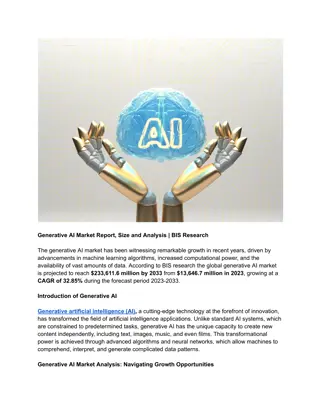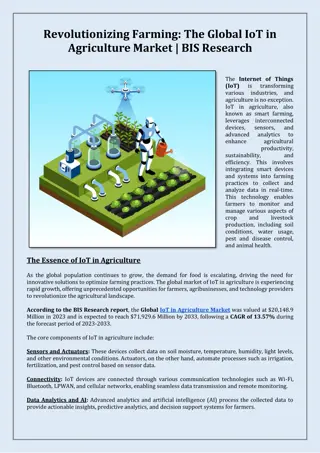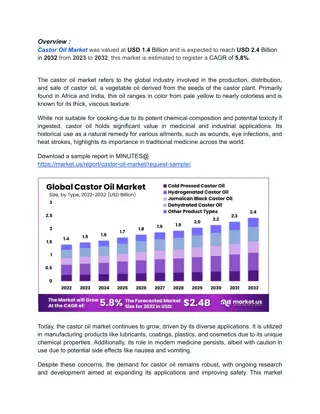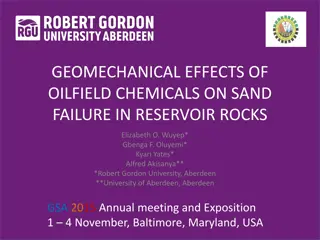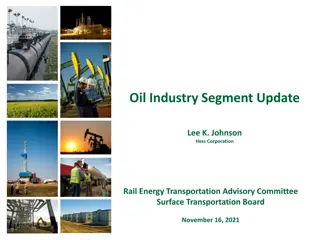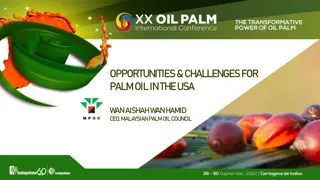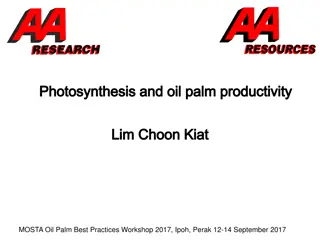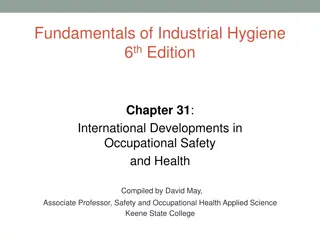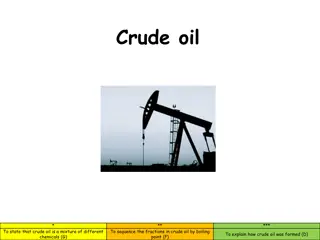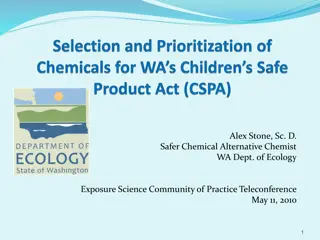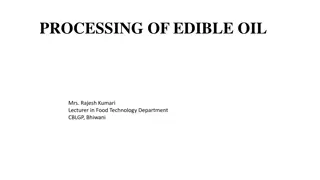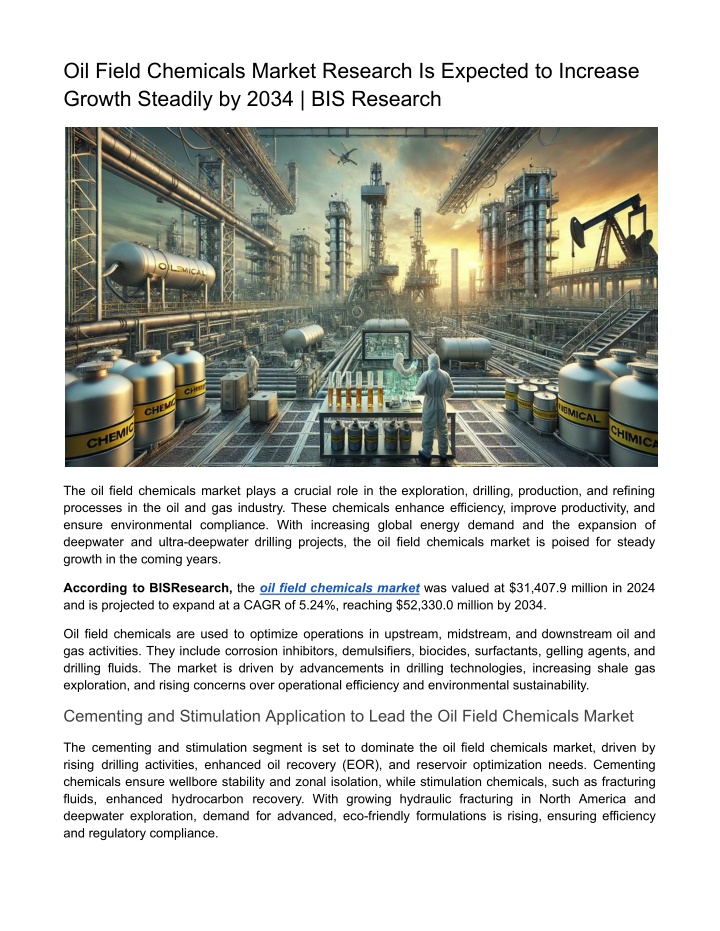
Oil Field Chemicals Market Report | BIS Research
The oil field chemicals market was valued at $31,407.9 million in 2024 and is projected to expand at a CAGR of 5.24%, reaching $52,330.0 million by 2034.nnRead Report Overview: //bisresearch.com/industry-report/oil-field-chemicals-market.html
Download Presentation

Please find below an Image/Link to download the presentation.
The content on the website is provided AS IS for your information and personal use only. It may not be sold, licensed, or shared on other websites without obtaining consent from the author. If you encounter any issues during the download, it is possible that the publisher has removed the file from their server.
You are allowed to download the files provided on this website for personal or commercial use, subject to the condition that they are used lawfully. All files are the property of their respective owners.
The content on the website is provided AS IS for your information and personal use only. It may not be sold, licensed, or shared on other websites without obtaining consent from the author.
E N D
Presentation Transcript
Oil Field Chemicals Market Research Is Expected to Increase Growth Steadily by 2034 | BIS Research The oil field chemicals market plays a crucial role in the exploration, drilling, production, and refining processes in the oil and gas industry. These chemicals enhance efficiency, improve productivity, and ensure environmental compliance. With increasing global energy demand and the expansion of deepwater and ultra-deepwater drilling projects, the oil field chemicals market is poised for steady growth in the coming years. According to BISResearch, the oil field chemicals market was valued at $31,407.9 million in 2024 and is projected to expand at a CAGR of 5.24%, reaching $52,330.0 million by 2034. Oil field chemicals are used to optimize operations in upstream, midstream, and downstream oil and gas activities. They include corrosion inhibitors, demulsifiers, biocides, surfactants, gelling agents, and drilling fluids. The market is driven by advancements in drilling technologies, increasing shale gas exploration, and rising concerns over operational efficiency and environmental sustainability. Cementing and Stimulation Application to Lead the Oil Field Chemicals Market The cementing and stimulation segment is set to dominate the oil field chemicals market, driven by rising drilling activities, enhanced oil recovery (EOR), and reservoir optimization needs. Cementing chemicals ensure wellbore stability and zonal isolation, while stimulation chemicals, such as fracturing fluids, enhanced hydrocarbon recovery. With growing hydraulic fracturing in North America and deepwater exploration, demand for advanced, eco-friendly formulations is rising, ensuring efficiency and regulatory compliance.
Industrial Driver for the Oil Field Chemicals Market The oil field chemicals market is growing due to increased upstream exploration and production (E&P) activities and the rising need for enhanced oil recovery (EOR) techniques. With global energy demand rising, operators are focusing on deepwater, ultra-deepwater, and unconventional resource extraction, requiring advanced drilling fluids, stimulation chemicals, and corrosion inhibitors for efficiency. Declining production in mature oil fields is driving EOR adoption, including polymer flooding, surfactant injection, and gas injection, improving reservoir sweep and extraction yields. Increased E&P investments and expanding EOR applications are boosting demand for specialized oil field chemicals, ensuring reservoir optimization, production efficiency, and extended well life. Request A Detailed Sample on the Oil Field Chemicals Market! North America Region to Lead the Oil Field Chemicals Market North America is poised to lead the oil field chemicals market, driven by its strong oil and gas industry, ongoing shale gas exploration, and advancements in drilling technologies. The presence of major chemical manufacturers, coupled with significant R&D investments, enhances the region s competitive edge. Additionally, strict environmental regulations and a focus on sustainable operations are boosting demand for advanced chemical solutions. With increasing drilling activity in the U.S. and Canada, North America remains a hub for innovation and market growth. Key Players of the Oil Field Chemicals Market BASF DOW Clariant Solvay Ecolab Chevron Phillips Chemical Company LLC Croda International Plc SLB Bakers Hughes Company Kemira Huntsman International LLC. Hextar Kimia Sdn Bhd. Industrial Opportunity for the Oil Field Chemicals Market The growing demand for sustainable and eco-friendly chemical alternatives presents a major opportunity in the oil field chemicals market. With increasing regulatory scrutiny and industry pressure to reduce environmental impact, oil and gas operators are prioritizing high-performance solutions that maintain efficiency while minimizing ecological footprints. This shift is making sustainable oil field chemicals a mainstream industry focus.
Companies investing in "green" oil field chemicals, such as biodegradable fracturing fluids with plant-based polymers and enzymes, are gaining a competitive edge. Successful pilot projects using food-grade additives have shown improved water treatment efficiency, increasing the potential for widespread adoption, especially in regions with strict environmental regulations. Download Our ToC: Click Here! Conclusion The oil field chemicals market is set for substantial growth, driven by technological advancements, increasing energy demand, and offshore exploration projects. While challenges such as fluctuating oil prices and regulatory compliance persist, innovations in sustainable chemicals and digital oil field solutions offer promising opportunities for industry players. As the global oil and gas sector evolves, oil field chemicals will remain a vital component in optimizing production and ensuring operational efficiency.



